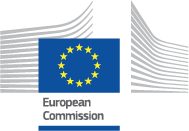THE EU HUMANITARIAN AIR BRIDGE
BACKGROUND
COVID-19 pandemic and related preventive and response measures adopted globally have resulted in restrictions of movements of cargo and passengers around the world. These restrictions have also affected the movement of medical and humanitarian supplies and staff, hampering the delivery of humanitarian assistance in many crises, which require an immediate specific response. To support the global response to COVID 19 and continue the flow of humanitarian assistance, the European Commission launched the European Union Humanitarian Air Bridge (EU HAB) on 22 April 2020. Conceived as a joint endeavour under the TEAM EUROPE approach to address the global consequences of COVID-19 and complements UN logistical services. This initiative will build on the active collaboration between the European Institutions and the Member States.
WHAT IS THE EU HUMANITARIAN AIR BRIDGE?
The EU Humanitarian Air Bridge (EU HAB) is an integrated package of services to support the delivery of humanitarian aid to third countries in the aftermath of the COVID-19 pandemic outbreak. It supports the delivery of COVID-19 related equipment and other essential humanitarian supplies. EU HAB also facilitates the movement of humanitarian staff. It offers to Member States dedicated air transport capacity to support the immediate logistical needs of humanitarian actors. Conceived as a temporary initiative for 3 to 6 months, it acts in complementarity with the logistical services included in the UN Global Humanitarian Response Plan. The EU HAB has a worldwide coverage focussing on the most pressing humanitarian operational bottlenecks. It has a strong focus on Africa. EU HAB is endowed with EUR 10 million.
HOW DOES IT WORK?
EU HAB operations are implemented in a sequence of four phases:

Phase 1.- Assessment
As part of their normal duties, humanitarian needs in a given country are continuously assessed by DG ECHO field network, including those related to transportation needs for humanitarian cargo and/or passengers. As part of this situation assessment, DG ECHO partners are invited to share their needs in a specific country with the relevant DG ECHO field offices.
ECHO field offices will also assess potential complementarities with UN services, availability of commercial alternatives and maintain local contacts with interested MS, UN RC/HC, Humanitarian Country Team and Logistical Clusters and humanitarian actors (UN and INGOs).
As part of this initial assessment, ECHO HQ will also maintain regular contacts with MS and Humanitarian actors at HQ level, notably Global Logistics Cluster, WFP Logistics and Reseau Logistique Humanitaire (RLH).
For those contexts where there are confirmed needs and EU HAB can complement existing capacities effectively and efficiently and a Member State expresses interest to activate the EU HAB, DG ECHO shall decide whether to proceed to the Phase 2 - “Preparation”.
2.- Preparation
DG ECHO informs stakeholders about the preparation of a given operation and those actors having expressed needs will be contacted to define their needs in detail.
Partners shall share this information through a Users’ Logistics Coordinator appointed by DG ECHO and communicated via its Field Offices.
EU HAB is open to all humanitarian actors in a given country either funded by EU or not.
Should space be limited, the final decision on what cargo is to be prioritised will be taken by DG ECHO and the activating MS.
While activation of Phase 2 “Preparation” shows interest by a MS and DG ECHO to undertake an EU HAB action, no operation is confirmed until it reaches Phase 3 (“Implementation”).
Once needs are identified with precision, DG ECHO will assess logistical options. Once DG ECHO contracts the transport services, the EU HAB operation enters phase 3 “Implementation”.
3.- Implementation
Users will be informed about the confirmation of the operation and instructions for delivery of cargo and movement of passengers will be provided.
The relevant EU Delegations in third countries will support the Member States’ services in facilitating the necessary demarches for a smooth arrival and departure of planes.
EU HAB costs are 100% covered by DG ECHO and are free for users, both cargo and passengers movements. The EU HAB offers transport services only and will not cover the procurement of humanitarian material which shall be made available by the users. Sanitary measures will be done in accordance to the regulations in place in the countries of departure and arrival.
4. Completed
Upon completion of the cargo and/or passenger flights the operation will be closed. EU HAB is not a regular service. It offers punctual transport capacities complementing UN Logistics aiming to reduce backlog and timing of delivery in the early stages of the pandemic.
WHAT EU HAB OPERATIONS ARE ACTIVE TODAY ?
(This information will be regularly updated)
As of 12 December, the following countries are in:
FREQUENTLY ASKED QUESTIONS
EU HAB Frequently Asked Questions
HOW TO CONTACT US?
The Directorate-General for European Civil Protection and Humanitarian Aid Operations has set up a dedicated operational Task Force regrouping its well-established capacities to assist humanitarian partners and Member States.
Request for general information can be addressed at the following mail address: EU-HUMANITARIAN-AIRBRIDGE@ec.europa.eu
Information of transport needs in a given country shall we shared with the relevant DG ECHO Field Office.





